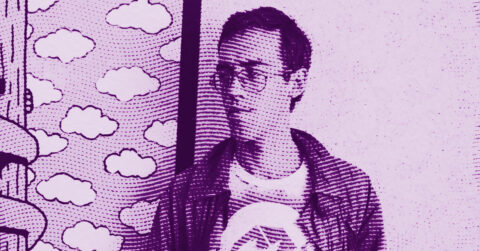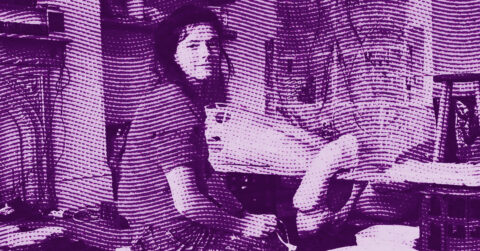Listen to me carefully, you bunch of snobs. Graham Knuttel deserves your attention not for the superficial reasons you imagine, but because he was able to capture with surgical precision the soul of an era. This man, who passed away in 2023 at the age of sixty-nine, was not simply the painter of Dublin’s new elites; he was their relentless anatomist. When the Irish artistic establishment looked at him with suspicion, when critics did not understand his phenomenal success, they missed the point. Knuttel painted the truth of his time with documentary precision that history will recognize.
The expressionist mirror of a society in transition
It must be understood that Graham Knuttel’s work is anchored in a European expressionist tradition whose roots plunge into the upheavals of the 20th century. The influence of Otto Dix [1] on his work is not anecdotal; it reveals a profound intellectual lineage with the German New Objectivity school. Just as Dix painted the excesses of the Weimar Republic, Knuttel documented those of the Celtic Tiger. This kinship goes far beyond mere stylistic resemblance. Otto Dix, a traumatized veteran of the First World War, developed a ruthless gaze upon the German elites of the 1920s, depicted in portraits where bourgeois decadence was exhibited unabashedly. Dix’s characters, bankers, prostitutes, and corrupt intellectuals, bore on their faces the stigmas of a decaying era.
Knuttel operated a similar transposition in the Ireland of the 1990s and 2000s. His gangsters in pinstripe suits, his femme fatales with calculating looks, his businessmen with predatory smiles constitute the contemporary equivalent of the portrait galleries Dix exhibited in Berlin salons. This kinship is no coincidence. Like Dix before him, Knuttel possessed that rare ability to capture the spirit of an era through the physiognomy of its main actors. The German painter used the technique of tempera on wood to achieve photographic precision that made his satires even more biting. Knuttel, for his part, developed his own visual grammar, saturated colors and simplified but expressive forms, to produce a similar effect of social acuity.
This expressionist lineage explains why Knuttel’s works function so well as historical documents. They do not simply represent the appearances of the Celtic Tiger; they reveal its deep psychological structure. The faces he paints, always viewed in profile or three-quarters, never full face, suggest the fundamental duplicity of their models. This technique of the oblique gaze, which Otto Dix also mastered, turns each portrait into a psychological investigation. When Dix painted the Berlin bourgeoisie, he revealed their moral emptiness beneath the veneer of respectability. Knuttel did exactly the same with Ireland’s new rich.
The influence of German Expressionism on Knuttel also manifests in his treatment of urban space. His bar and restaurant scenes recall Dix’s nocturnal interiors, those places of pleasure where all the vices of a society concentrate. For both painters, the modern city becomes a theater of corruption, a laboratory of human passions. This expressionist vision of urban modernity finds a particularly relevant application in Knuttel’s work within the context of the Irish economic boom. Dublin, transformed by the influx of international capital, offered the artist an ideal field of observation to exercise his critical gaze.
The recurrence of certain motifs, chefs, sailors, and Punch and Judy characters, in Knuttel’s work fits within this expressionist tradition of social allegory. These figures function as archetypes, condensations of typical social situations. The chef represents the dietary hedonism of the new wealthy classes, the sailor evokes adventure and danger, and Punch embodies the primitive violence that survives beneath the civilizing veneer. This gallery of recurring characters allows Knuttel to construct a personal mythology of the Celtic Tiger, just as Dix had created his own iconography of German decadence.
The anthropologist of power and money
If expressionism provides Knuttel with his stylistic tools, it is in social anthropology that one must seek the true scope of his work. The Dublin artist functioned as an ethnographer of his own society, documenting with scientific precision the rituals and codes of the new Irish bourgeoisie. This anthropological approach to painting brings him close to the work of Pierre Bourdieu [2] on social distinction and class habitus. Bourdieu demonstrated how artistic tastes, table manners, and dress codes function as markers of social position. Knuttel translated these mechanisms into images with formidable effectiveness.
Bourdieu’s sociological analysis finds a perfect illustration in Knuttel’s way of representing outward signs of wealth. His characters all display the attributes of newly acquired economic capital: expensive suits, ostentatious jewelry, and luxury cigars, yet their gestures often betray their more modest origins. This contradiction between having and being, central to Bourdieu’s theory of social reproduction, constitutes one of the main dramatic springs of Knuttel’s painting. He captures these nouveau riches in their constant effort to master the codes of their adopted class, thereby revealing the fragility of their social position.
The concept of habitus developed by Bourdieu, those durable dispositions that guide our social practices, finds a striking visual translation in Knuttel’s works. His characters literally bear on their bodies the traces of their social trajectory. Their faces, postures, and gestures betray their origins and reveal the efforts they deploy to adapt to their new status. This anthropology of the social body allows Knuttel to document with ethnographic precision the transformations of contemporary Irish society.
Knuttel’s interest in bourgeois social places, chic restaurants, private clubs, and art galleries fits perfectly within this anthropological perspective. These spaces function as laboratories of social observation, places where the rituals of class distinction are displayed. Bourdieu had shown how attending certain cultural venues legitimizes the social position of their users. Knuttel exactly paints these legitimation mechanisms in action, showing how the new Irish rich use cultural consumption to consolidate their status.
The recurrence of meal scenes in Knuttel’s work is particularly interesting from this anthropological viewpoint. Social anthropology has extensively documented the importance of food practices as identity and social markers. The business lunches and social dinners that Knuttel paints are never mere moments of conviviality; they constitute rituals of power where influences and alliances are negotiated. The artist captures these mechanisms with the insight of an ethnologist, revealing how gastronomy becomes an instrument of social domination.
This anthropological approach explains why Knuttel’s works resonated so strongly with their targets. As Trevor White, founder of the Little Museum of Dublin, rightly observed, “nobody liked satire more than its targets.” This paradoxical reaction is explained by the sociological accuracy of the artist’s observations. By recognizing themselves in his portraits, the members of the Dublin elite implicitly validated the relevance of his social analysis. They were, in a way, buying their own anthropological portrait, thus participating in the documentation of their own social class.
The influence of Bourdieu’s sociology on the reading of Knuttel also helps to understand why his work goes beyond mere social chronicle to acquire a universal dimension. The mechanisms of social reproduction documented by the artist, ostentation, distinction, and cultural legitimation, operate in all developed capitalist societies. This universality explains the international success of his works, collected from Hollywood to London. Knuttel was not only painting Celtic Tiger Ireland; he was documenting contemporary modes of exercising economic power.
The legacy of a relentless witness
Graham Knuttel’s work constitutes an irreplaceable testimony to a pivotal period in Irish history. Beyond the aesthetic judgments that can be made about his production, one must acknowledge its exceptional documentary value. Like Otto Dix for the Weimar Republic, like Toulouse-Lautrec for fin-de-siècle Paris, Knuttel fixed for posterity the image of a bygone era. His canvases now function as visual archives of the Celtic Tiger, precious documents for understanding the sociological mechanisms that presided over this radical transformation of Irish society.
The misunderstanding Knuttel long suffered from the Irish artistic establishment reveals the limits of criticism too attached to traditional aesthetic criteria. By privileging technical virtuosity and formal innovation, it missed the essential: the artist’s ability to capture the spirit of his time. This critical myopia explains why Knuttel’s works found their audience outside the official artistic circles, directly among those they represented.
The prolificness often reproached to Knuttel finds its justification in this documentary mission he had assigned himself. An ethnographer does not settle for a few sparse observations, he accumulates testimonies, multiplies approaches, and builds an exhaustive corpus. Knuttel proceeded exactly the same way, producing a river work that systematically exhausts all aspects of his study subject. This systematicity explains the apparent repetitiveness of his production, which in reality masks a meticulous exploration of the different facets of the contemporary Irish bourgeoisie.
Knuttel’s legacy goes far beyond the scope of Irish art. He showed that a contemporary painter could fully assume his role as a social witness without sacrificing his artistic singularity. By developing an immediately recognizable visual language, he proved that figurative art retained all its relevance in a world dominated by abstraction and conceptual art. This lesson resonates today with a particular force, at a time when many artists seek to reconnect with the social function of their practice.
Knuttel’s posthumous critical fortune is already beginning to reverse. Art historians discover in his work an inexhaustible source of information about Irish society at the turn of the millennium. This reassessment is part of a broader movement rehabilitating figurative art, long considered outdated by the avant-gardes. Knuttel thus joins the lineage of painter-witnesses who were able to fix the image of their time for posterity, from Daumier to Bacon and Grosz.
The universality of Knuttel’s statement ensures his work a durability that goes beyond the geographical and temporal boundaries of his initial subject. The power and distinction mechanisms that he documented with such acuity continue to operate in our contemporary societies. His paintings thus retain all their critical force, serving as a revealing agent for the persistent hypocrisies of our economic elites. In this sense, Graham Knuttel succeeded the most difficult challenge for an artist: that of timelessness through anchoring in his era.
- Otto Dix (1891-1969), German painter and engraver, major figure of the New Objectivity, author notably of the triptych “Metropolis” (1927-1928) and the etching cycle “Der Krieg” (1924).
- Pierre Bourdieu (1930-2002), French sociologist, author of “Distinction” (1979) and developer of the habitus concept to analyze social reproduction mechanisms.
















